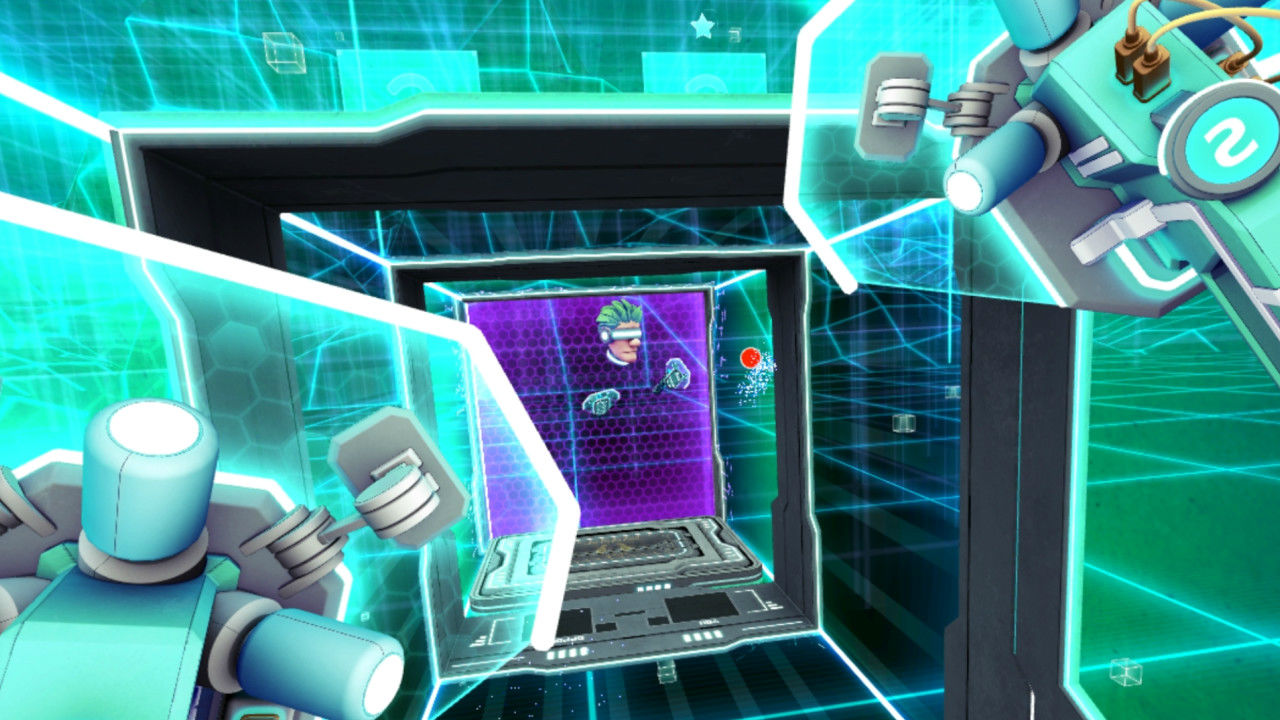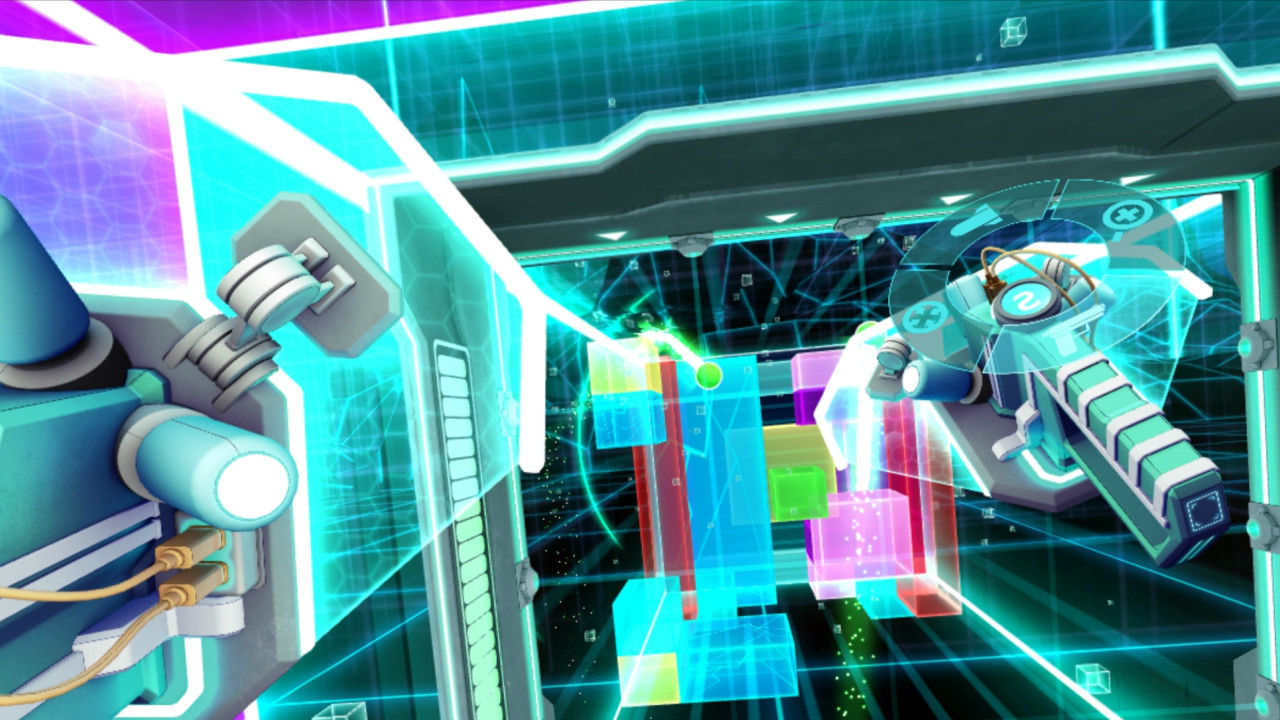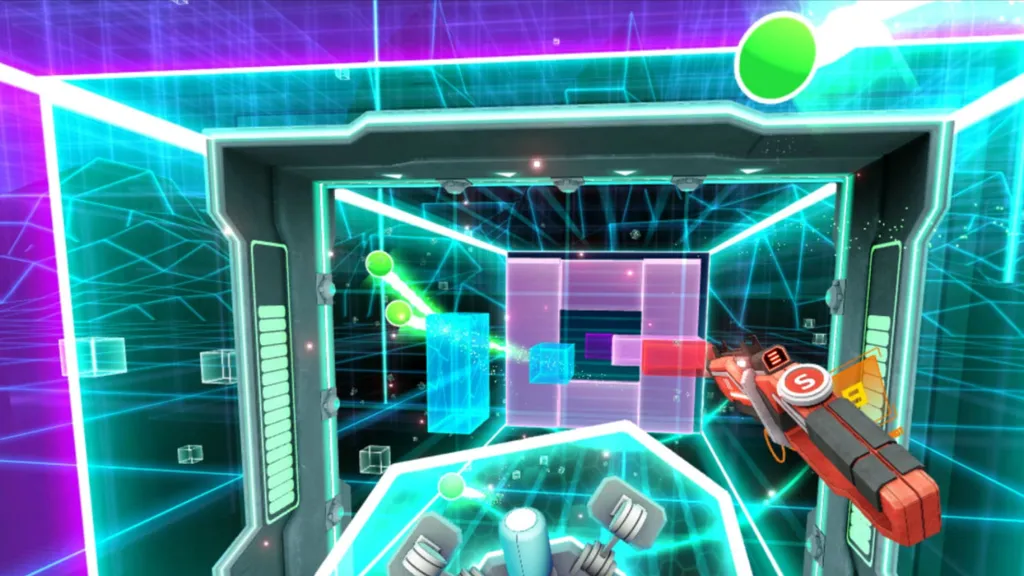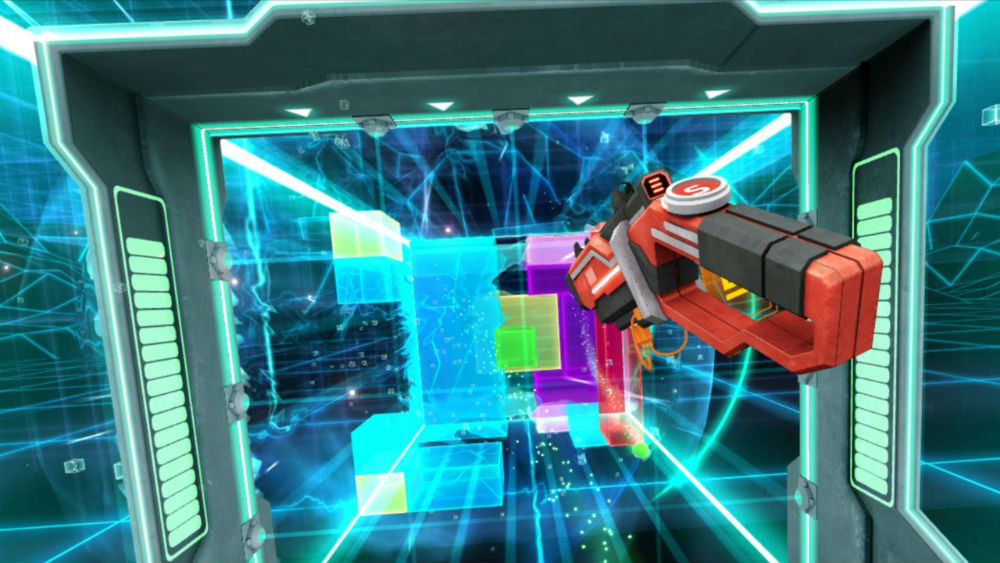The videogame industry owes a lot to Atari’s Pong, released more than 40 years ago. In the mid-1970s, it helped launch both arcade cabinets and home systems, and its simple multiplayer gameplay helped usher in a new era for entertainment. Countless games in the decades since its release have built on the simple mechanics shown on that blinking screen. So it’s no surprise that as virtual reality grows out of the videogame industry, a number of games inspired by Pong are already out there, like Proton Pulse and Holoball. Cyberpong is another, and though it draws from several games like Breakout and Tetris, the developers at Colopl have done a solid job adapting what have become classic gameplay concepts into VR.
You’re in a long room and there’s an endless wall of colorful blocks coming your direction. Each hand controller becomes a paddle and the game launches a single green ball at you to deflect toward the blocks. Destroy the blocks before they get too close for as long as you can.
There are four characters from which to choose and their differently shaped paddles allow for some variety in play style. In addition, using the touchpad accesses different power-ups that add a lot of depth to the game, including a gun to shoot at incoming blocks. Good sound effects and music keep the player fully immersed in the game from start to finish.
Green blocks spawn another ball when they are destroyed while purple blocks give you extra energy to use the special power-ups, including the gun and the ability to grab balls and hold onto them. The game can get pretty crazy after hitting several green blocks in a row and keeping all those balls in play can be challenging. Cyberpong really shines during that moment when your arms are frantically flying to keep multiple balls moving toward the blocks.

There’s definite skill involved in carefully hitting a ball toward the right block while managing your energy to destroy ones that get too close. You don’t want to run out of energy so you have to keep an eye out for the purple blocks and carefully time how frequently you collect and use the power-ups. Cyberpong also features well-thought out controls. Once you get the hang of it, switching to a power-up and then pressing the grip buttons to return to a traditional paddle is both fast and effective for accessing multiple abilities while not letting any balls get past. Also, it seems like the harder you swing at a ball with your paddles the more likely you are to send it in the direction you want. That said, even if you realize this it’s still hard to direct the ball exactly where you want it to go.
The game is priced at $15 and that seemed a bit high unless a stronger multiplayer community develops inside the game. When I tried matchmaking it was a ghost town. With the Vive user-base being relatively small, you should be prepared to spend $15 on the quality of the single player high score challenge. Still, fans of games where achieving a high score is the main object of the game might find it on par with Space Pirate Trainer or Zen Blade. My last high score was listed as being in the top 300 worldwide and I am no expert at the game. Knowing that I’m that close to holding a true high score will keep me coming back for more.
That said, I see myself returning to Cyberpong for higher scores with less regularity than a game like Space Pirate Trainer. The latter makes better use of the 360-degrees of freedom you have in the Vive, but as a childhood fan of Breakout and Tetris, this game fits into a very important niche for me. It’s a good Breakout game in VR. For fans of this type of game, good is all it needs to be.



























